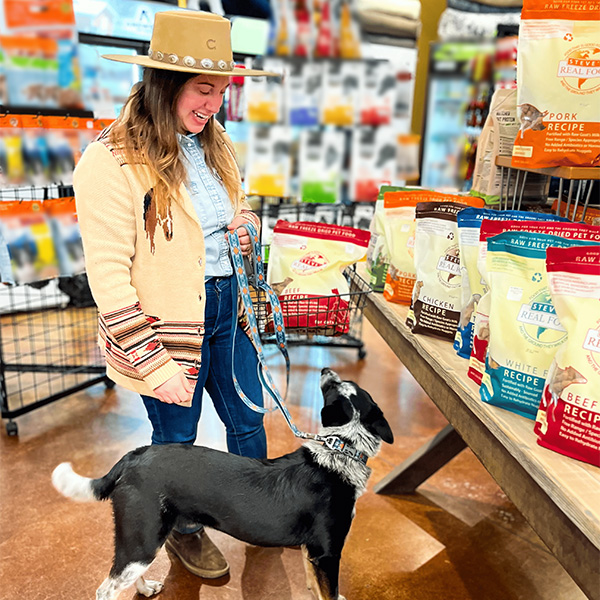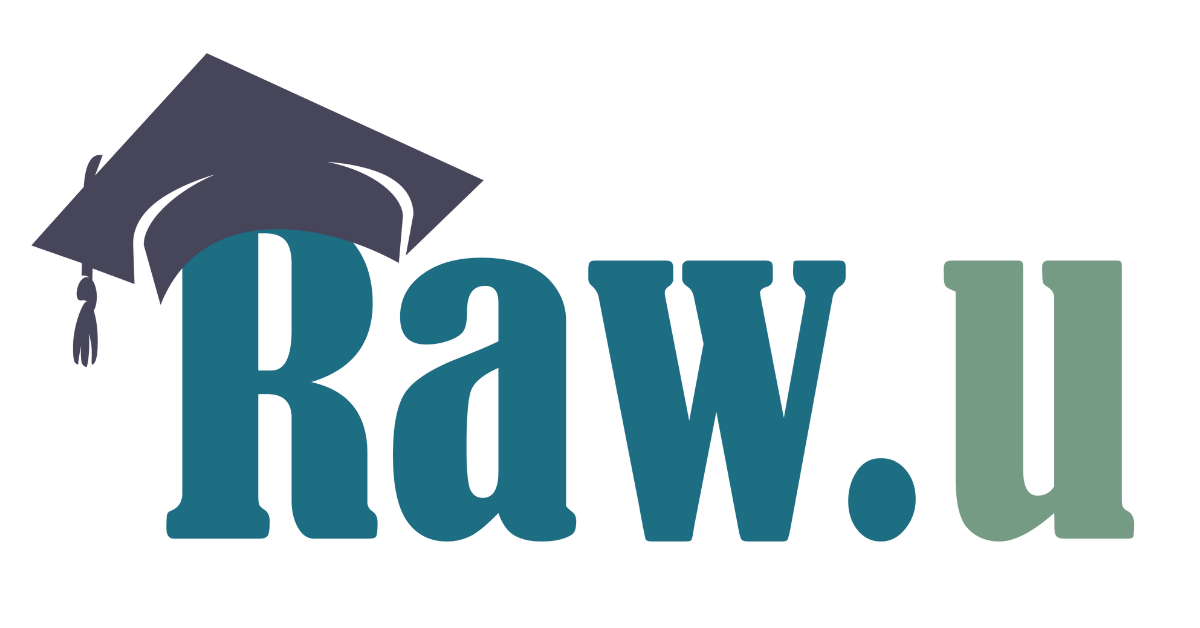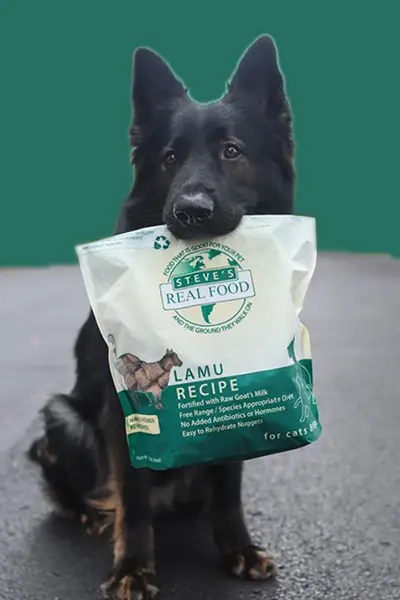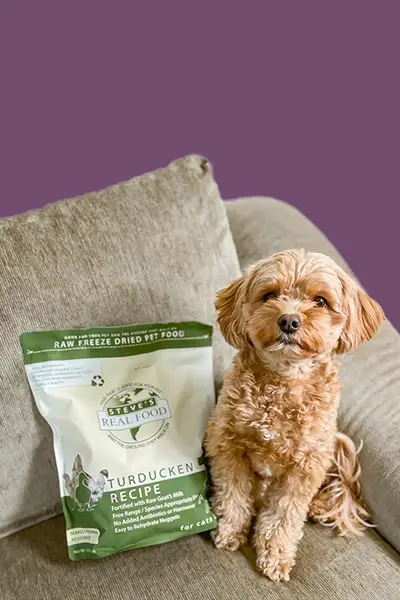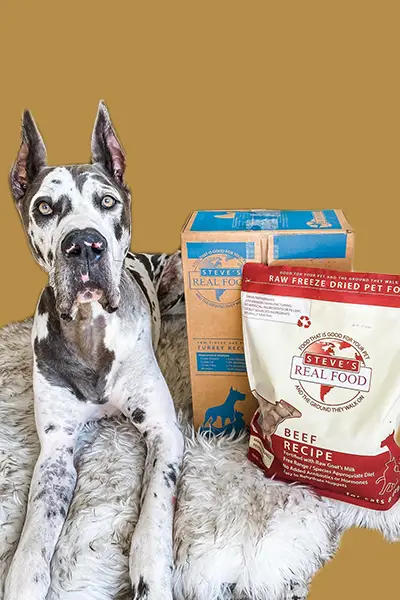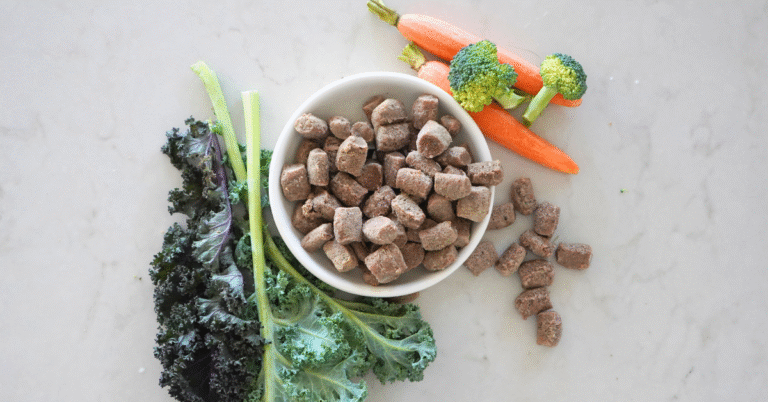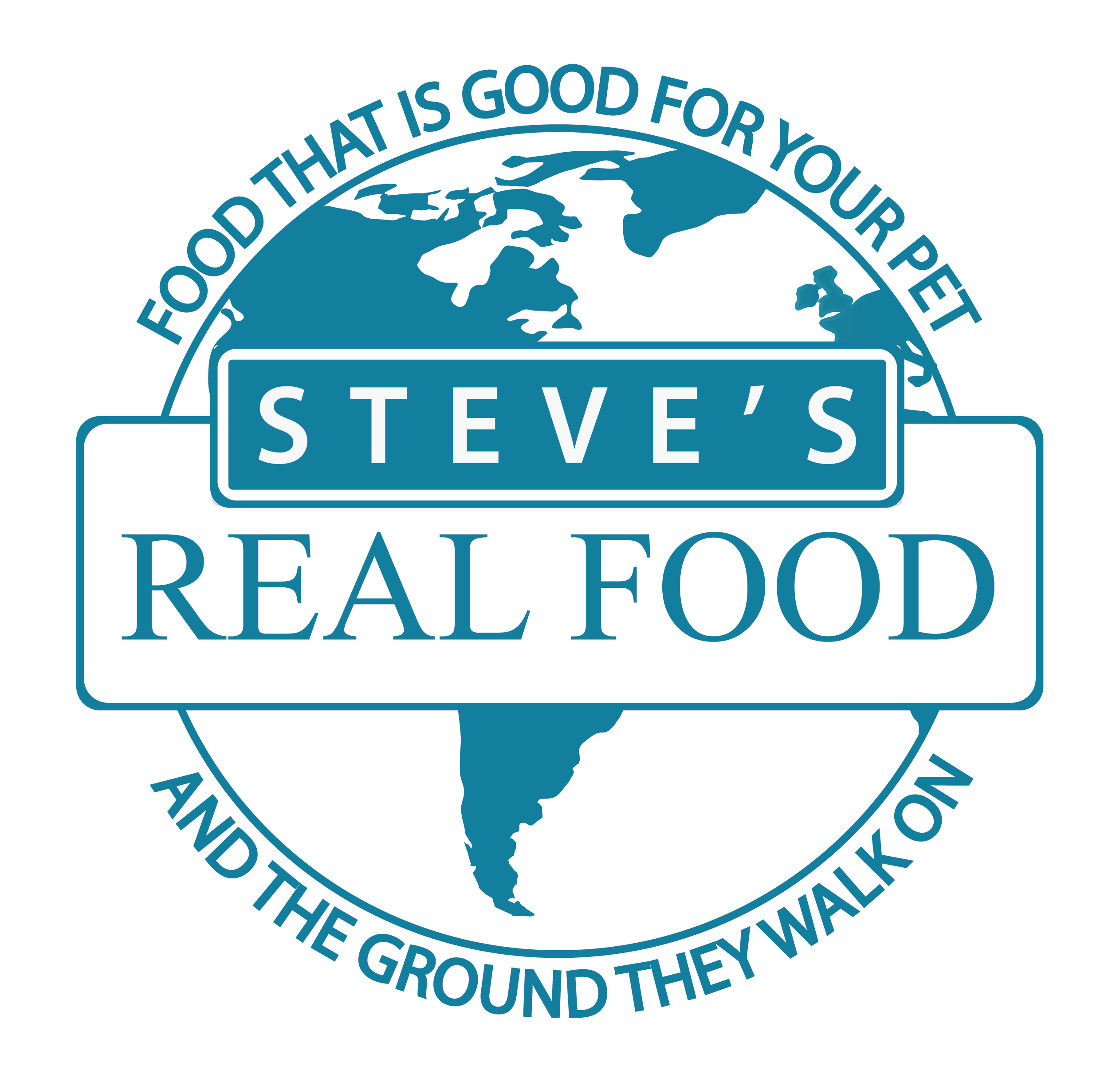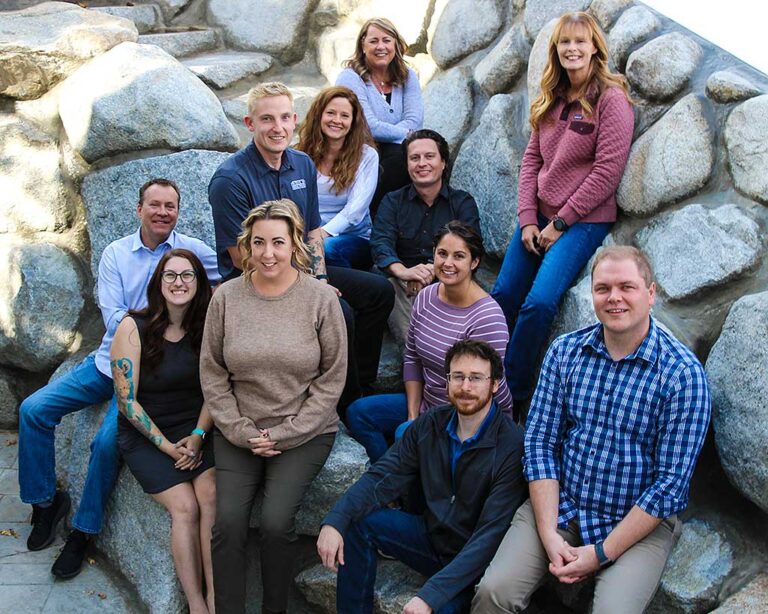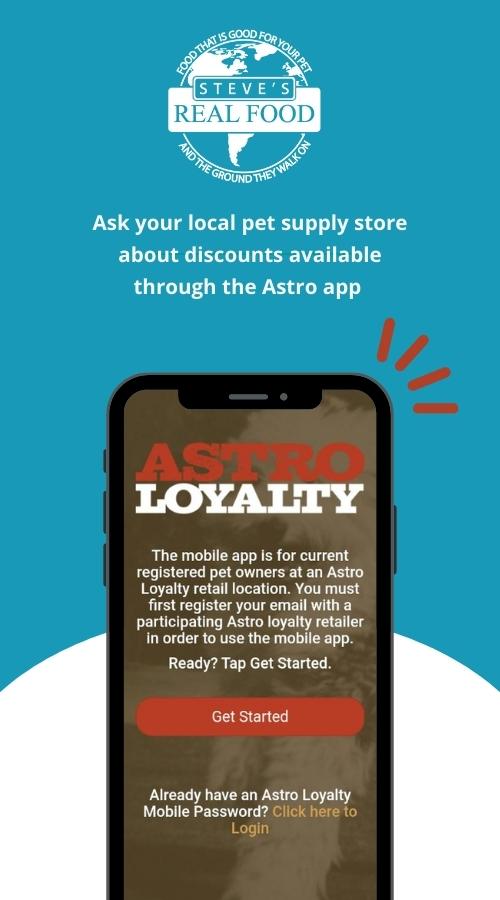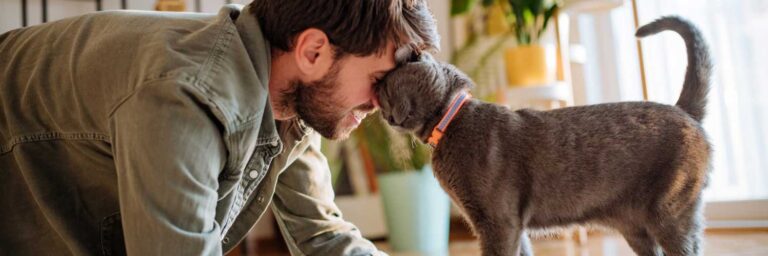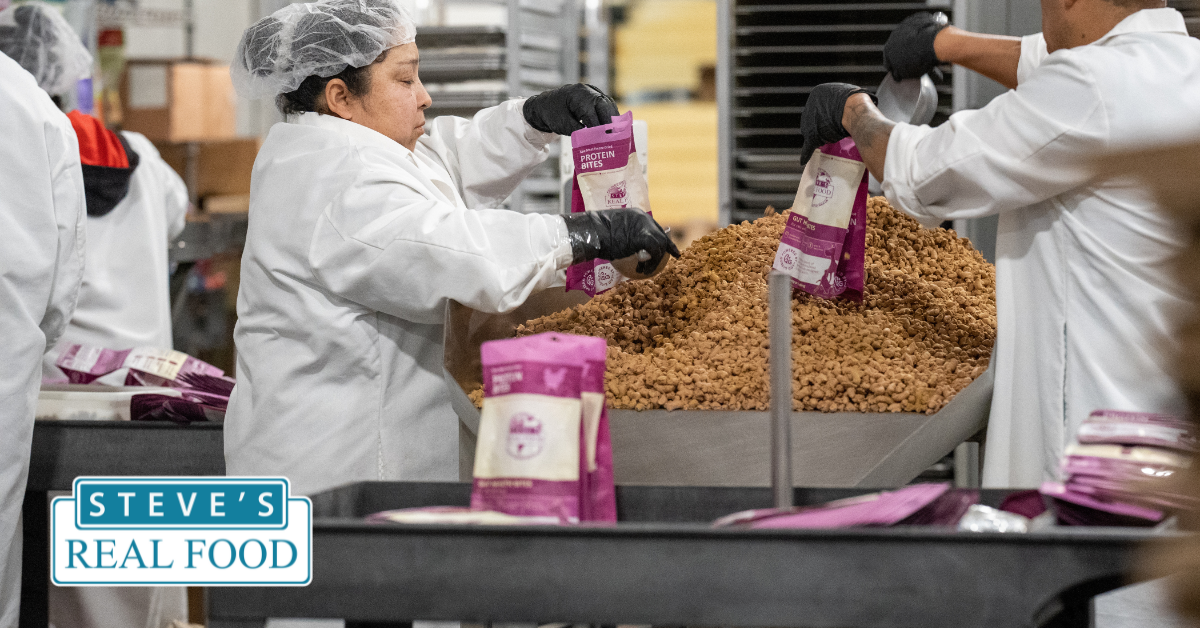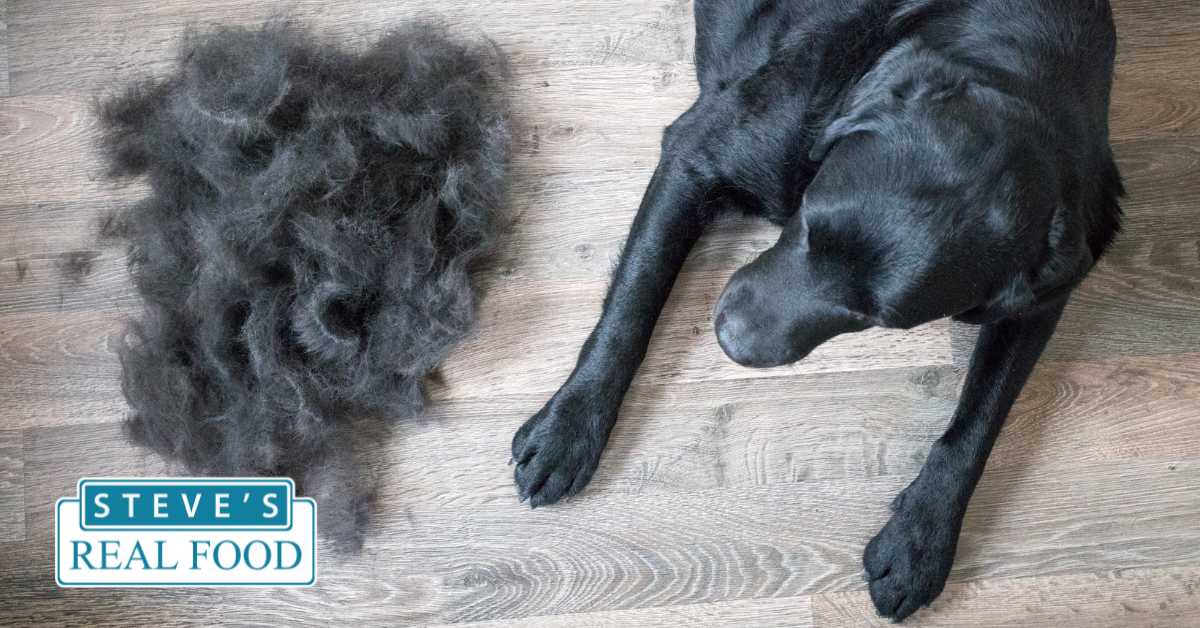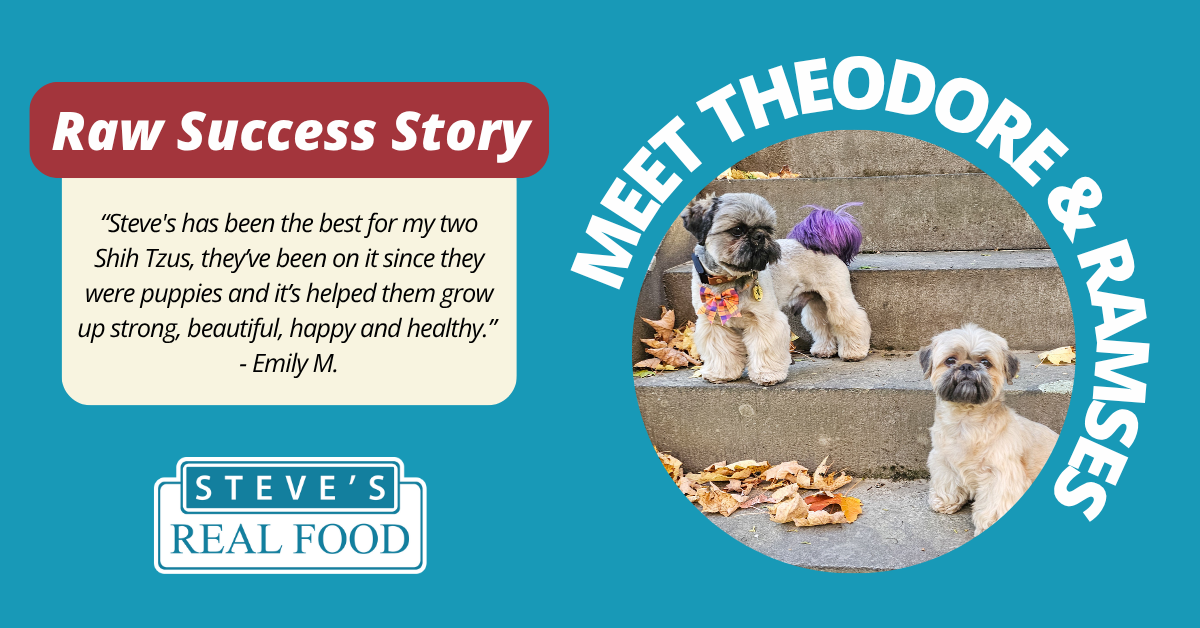When it comes to feeding our pets, we all want to do the right thing. But navigating the pet food aisle (or your Instagram feed) can feel like a maze of buzzwords, flashy claims, and conflicting opinions. Raw food is often caught in the middle of the debate—praised for its benefits, criticized for its risks, and misunderstood by many.
At Steve’s Real Food, we’ve been at the forefront of raw feeding for over two decades. We’ve seen the industry change, watched trends come and go, and stood by one core belief: pets thrive when they eat real food. But not all raw pet food is created equal, and not all concerns about raw feeding are without merit. So let’s take a closer look at some of the biggest issues in the pet food world and how we address them head-on.
Problem #1: The Processed Pet Food Takeover
Over the last few decades, pet food has undergone a dramatic shift—from scraps and leftovers to bags of shelf-stable, heat-processed kibble labeled as “100% complete and balanced.” But here’s the truth: cooking food at high temperatures diminishes nutrients and can even create harmful byproducts. Pets require a diverse array of fresh, bioavailable nutrients, not just synthetic vitamins sprayed on after the fact.
The idea that one processed formula can be the sole source of nutrition for every meal, every day, for a pet’s entire life? That’s not just unrealistic—it’s biologically flawed.
Problem #2: The Bacteria Debate
One of the biggest critiques of raw food is the potential presence of bacteria. Critics argue that domesticated pets have lost the ability to handle pathogens because they’ve eaten sterile commercial food for so long. But evolution doesn’t happen in a few decades. Dogs and cats are still biologically equipped with the same acidic stomachs and fast digestive systems they’ve always had—designed to handle a variety of bacteria in their environment and diet.
Let’s be real: most dogs who eat kibble are still licking floors, drinking pond water, and sneaking bites of who-knows-what. The key is balance and exposure to a healthy microbiome, not complete sterilization. That’s why we ensure Steve’s Real Food is made with human-grade ingredients and tested for safety, while still preserving the natural enzymes and probiotics pets need in their diet.
To add an extra layer of protection, we also use High-Pressure Processing (HPP) on all of our recipes. HPP is a cold-water pressure technique that eliminates harmful pathogens, such as Salmonella and E. coli, without the use of heat or chemicals. Unlike regular pasteurization, HPP doesn’t cook the food, so the nutritional integrity, enzymes, and beneficial bacteria stay intact. It’s the best of both worlds: food safety without compromising the raw benefits.
Problem #3: Not All Raw Foods Are Created Equal
The raw pet food market has grown fast, and while that’s exciting, it also means anyone with a meat grinder and a freezer can start selling “raw food.” Unfortunately, minimal regulations often mean there is no oversight on ingredient sourcing, production standards, or nutritional adequacy.
At Steve’s, we believe transparency and safety should be non-negotiable. That’s why we produce our food in a dedicated, USDA-inspected facility. Every batch is tested for pathogens such as Salmonella and Campylobacter, and it is held until we get the results. We don’t just meet standards—we exceed them. It’s how we’ve earned the trust of pet parents for over 25 years.
Problem #4: The “Complete and Balanced” Myth
Many raw brands (and all kibble brands) claim to be “complete and balanced.” But what does that even mean? In many cases, it means they meet the basic AAFCO requirements, which focus on crude protein, fat, and fiber content, rather than nutrient bioavailability or ingredient quality. That’s how kibble made with corn and byproducts can legally be considered “complete.”
Steve’s Real Food formulas are crafted using whole foods, carefully selected for their optimal nutrient content, not just to meet regulatory requirements. A PhD in nutrition reviews our recipes, and we routinely conduct tests to ensure the nutritional integrity of our products. We use real foods for our vitamins and minerals. No synthetics. So your pet gets real nourishment in every bite.
Problem #5: The Risk of Toxins—Not Just in Raw
There’s no question that bacteria and pathogens should be taken seriously. But let’s not forget that many high-profile recalls—due to aflatoxins, vomitoxins, and mold—have come from dry kibble manufacturers, not raw food. Ingredients such as low-quality grains, rendered meats, and prolonged storage times create the ideal environment for these toxins to thrive.
Our approach is different. We use high-quality meats, fruits, and vegetables, flash-freeze our food for maximum freshness, and rigorously test for pathogens and toxins.
Bottom Line: Trust Matters
Feeding raw can be incredibly rewarding, but it also requires discernment. Not every product on the shelf is made with the same care, standards, or science.
At Steve’s Real Food, we’re proud to set the bar. Our mission has always been to make real, safe, nutritious food that pets love and parents can trust. No shortcuts, no filler, no fluff—just thoughtfully crafted raw food made by people who care deeply about pets. Check out our Store Locator to find a store near you today!
 Beef
Beef Chicken
Chicken Whitefish
Whitefish Pork
Pork Lamb
Lamb Turkey
Turkey Turducken
Turducken All Protein
All Protein Beef
Beef Chicken
Chicken White Fish
White Fish Pork
Pork Lamb
Lamb Turkey
Turkey Duck
Duck All Products
All Products Frozen Raw Pet Food
Frozen Raw Pet Food
 Freeze Dried Raw Pet Food
Freeze Dried Raw Pet Food
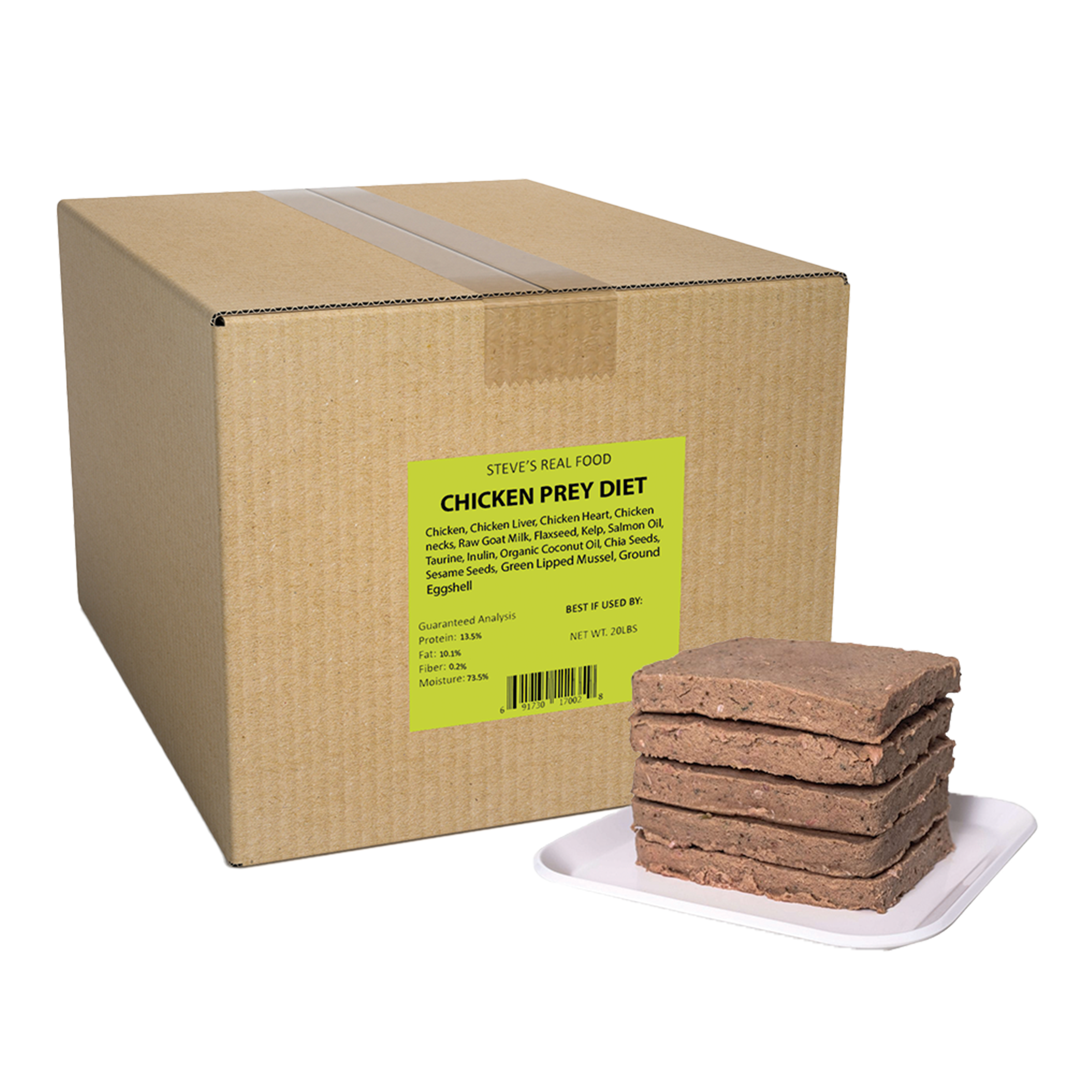 Frozen Prey Diet
Frozen Prey Diet
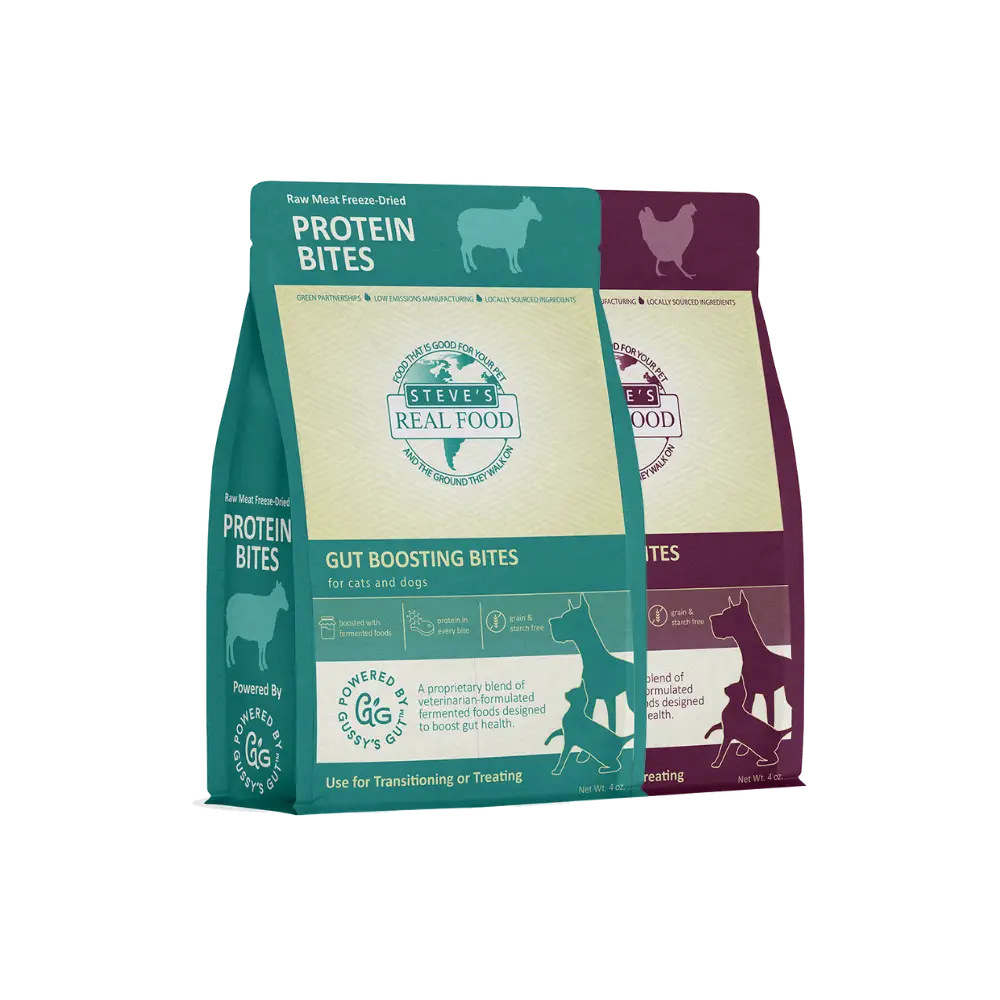 Freeze Dried Protein Bites
Freeze Dried Protein Bites
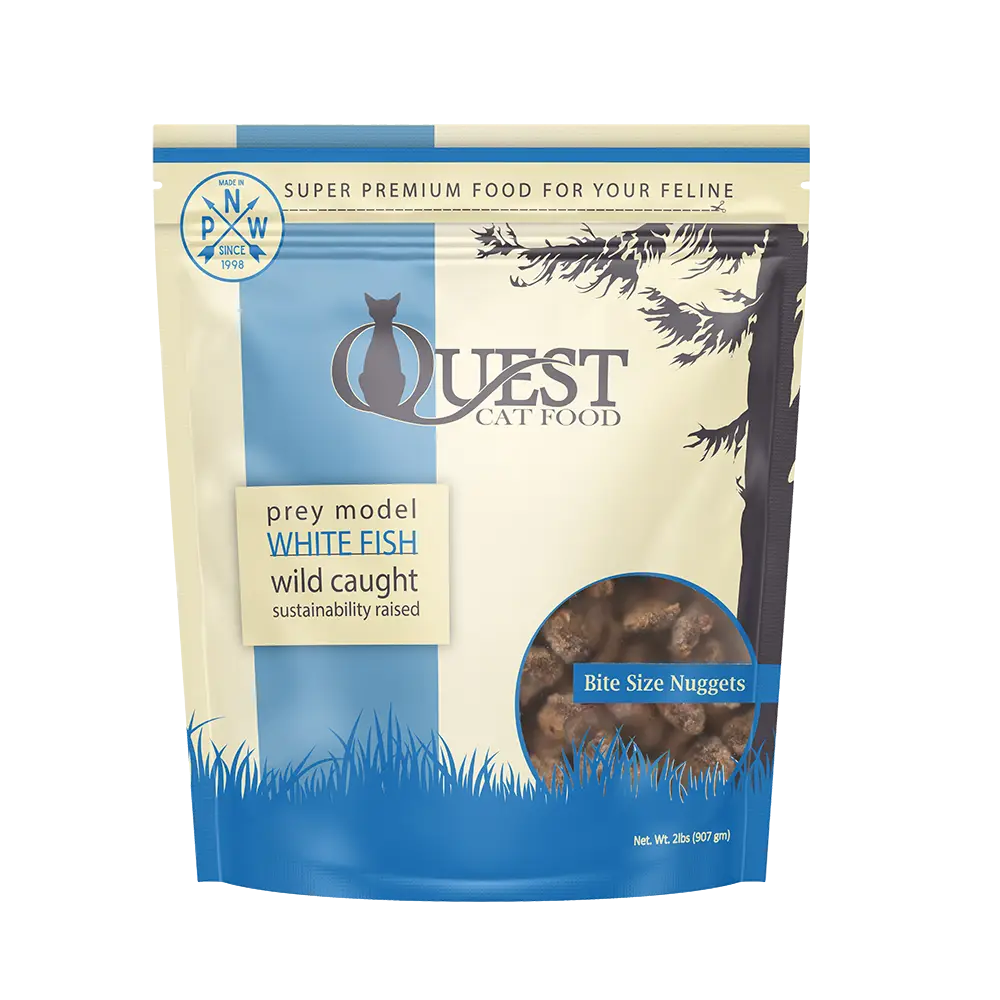 Frozen Quest
Frozen Quest
 Freeze Dried Quest
Freeze Dried Quest
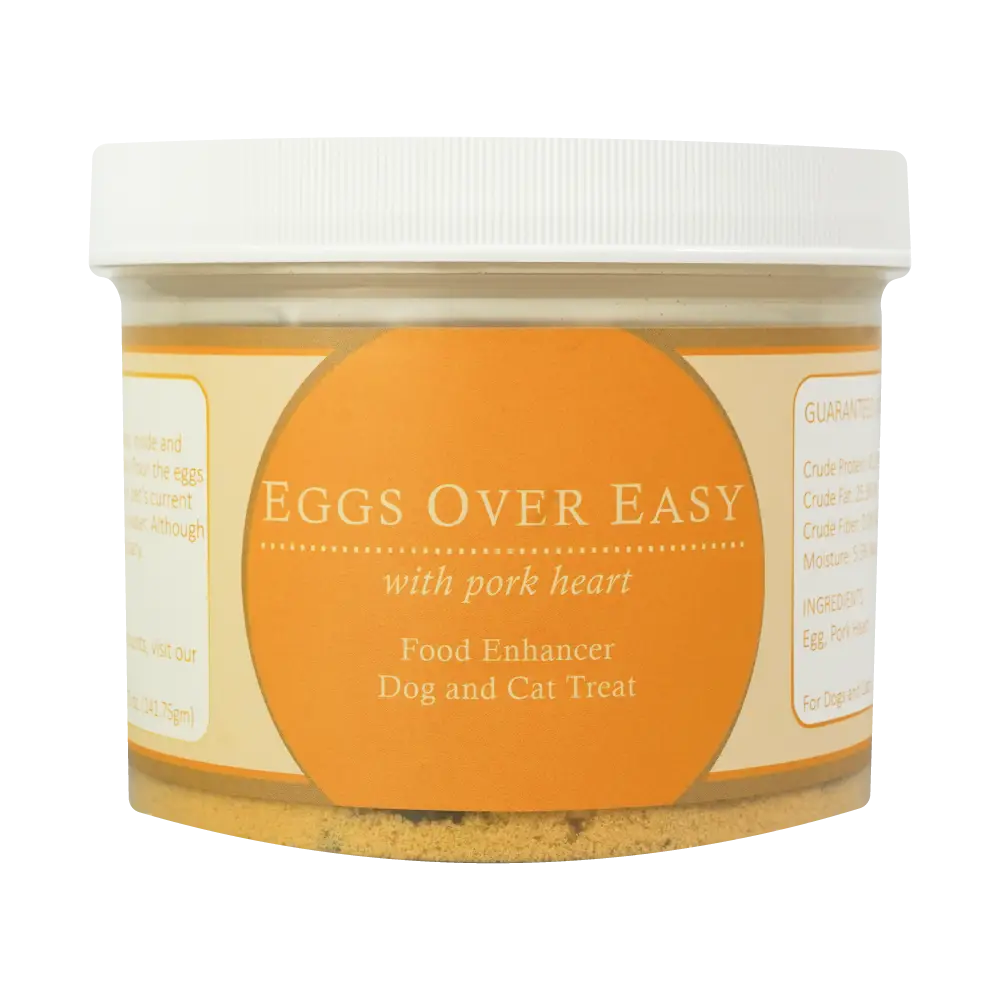 Eggs over Easy
Eggs over Easy
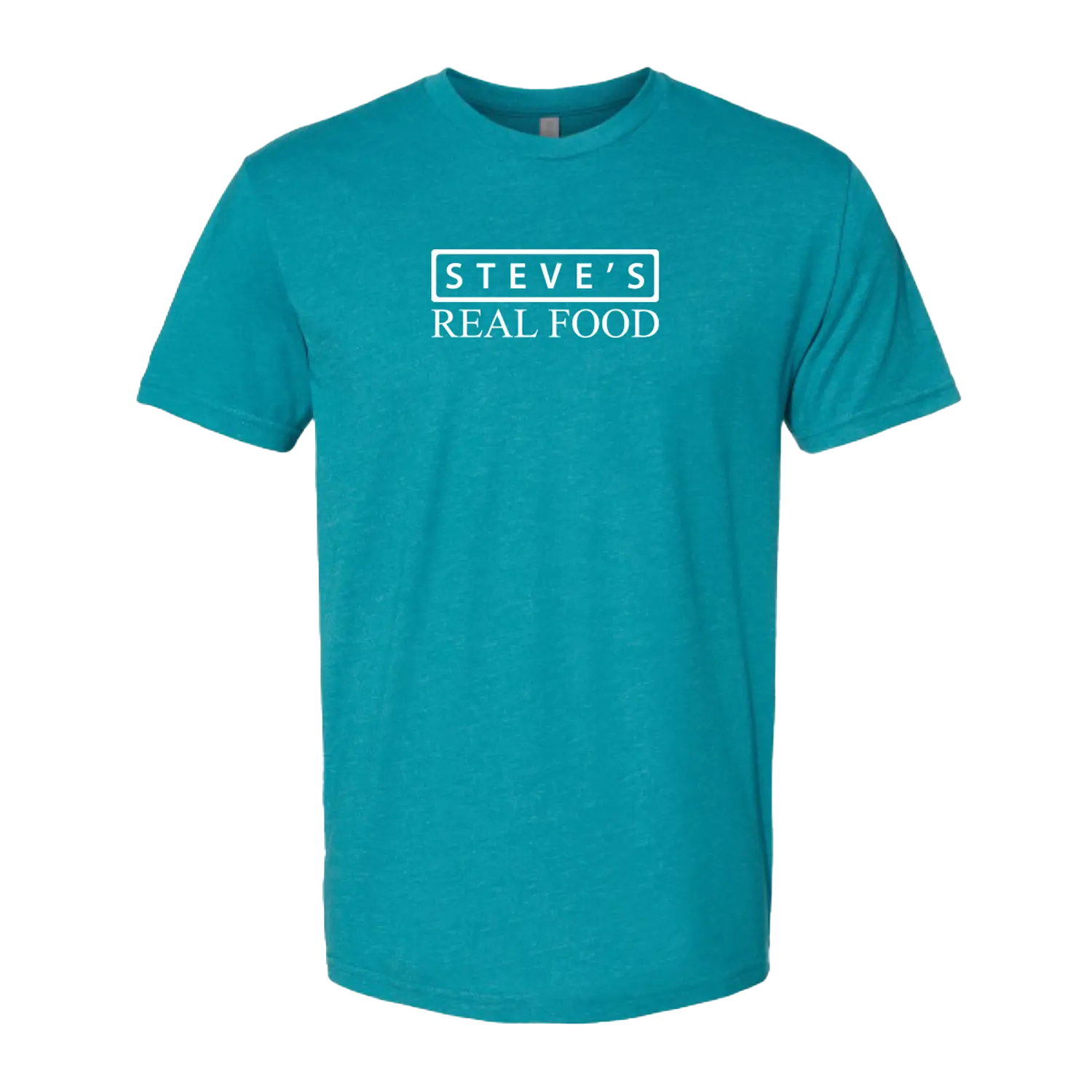 Steve's Merch
Steve's Merch 